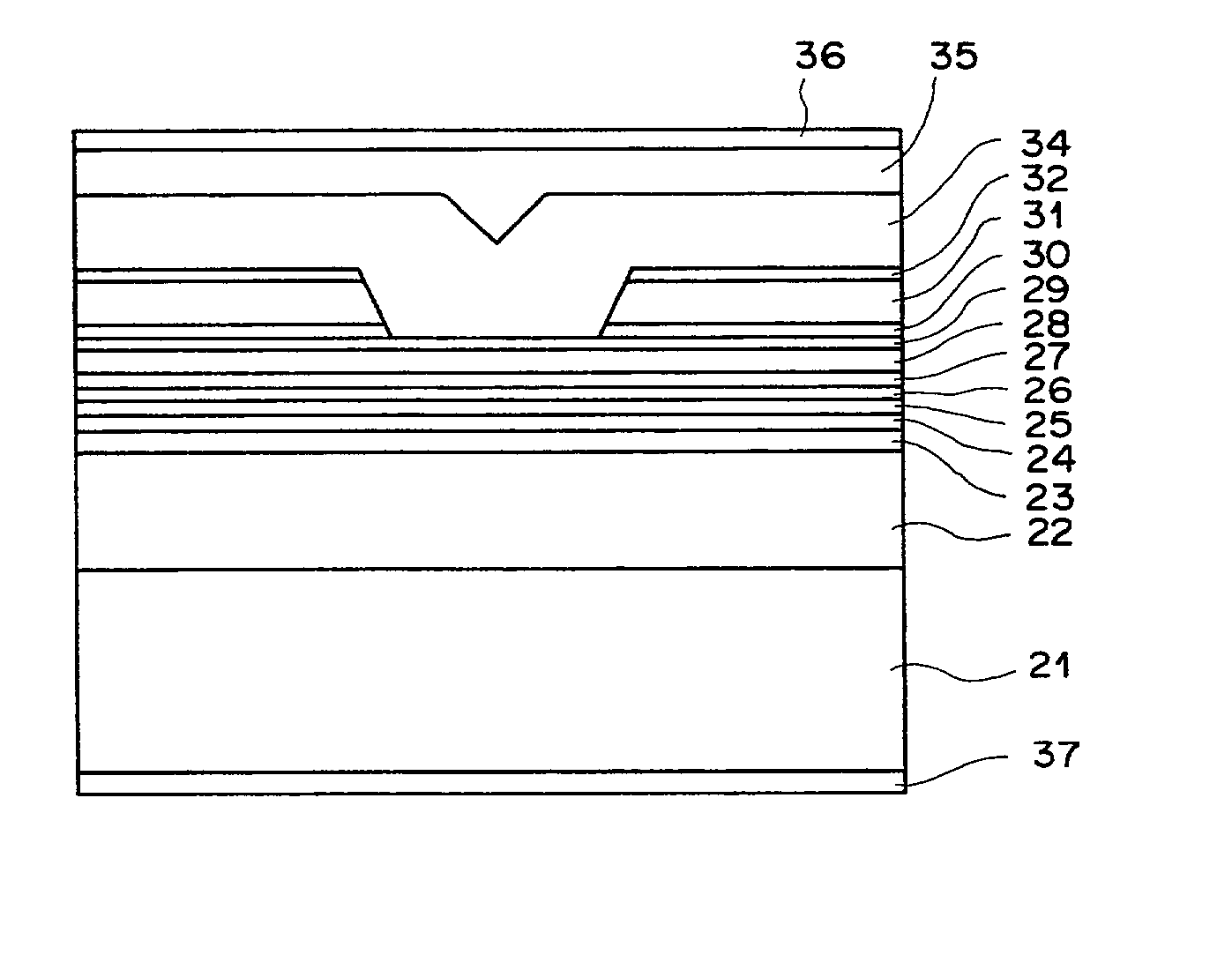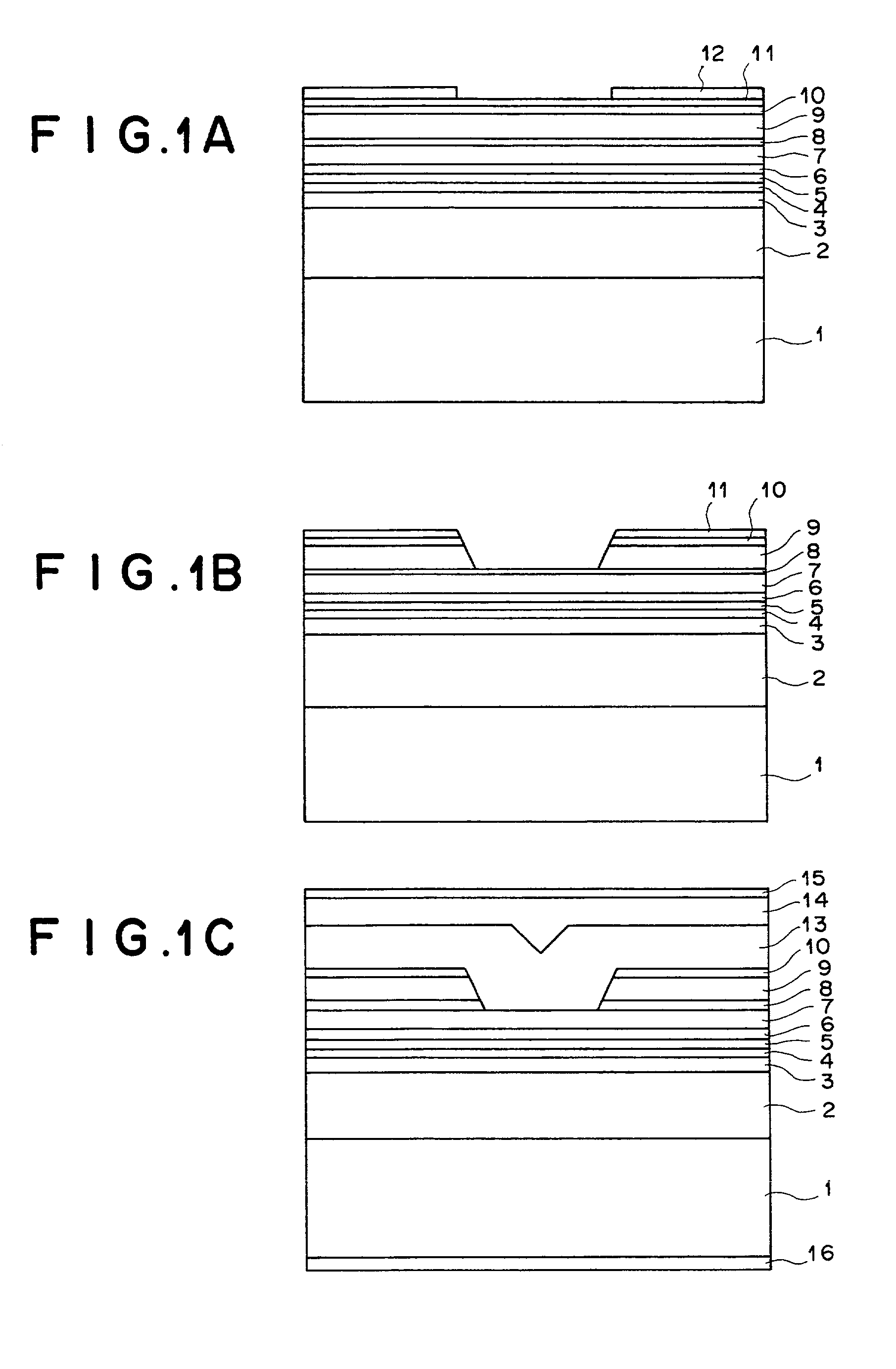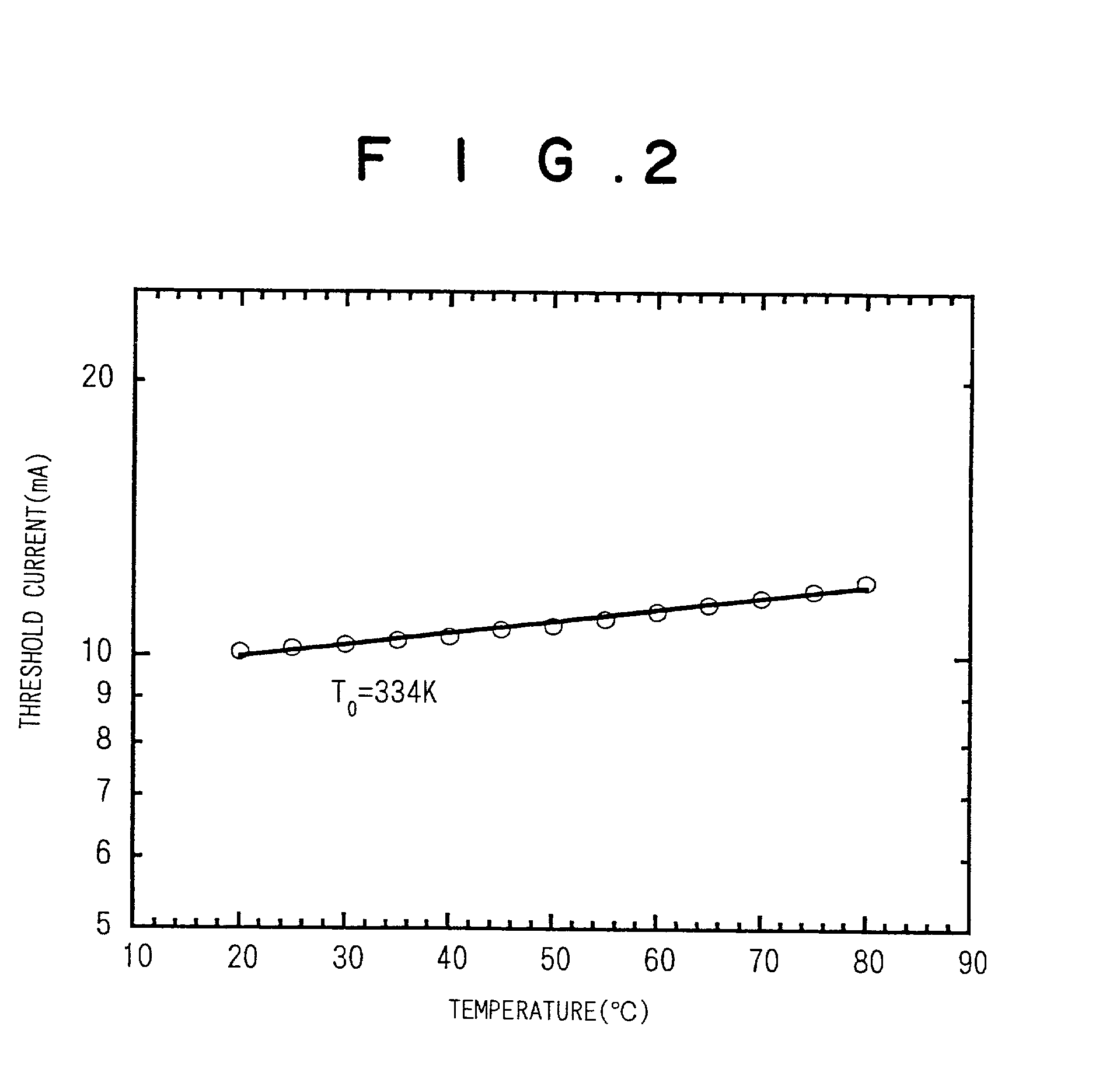Semiconductor laser device having inGaAs compressive-strain active layer, GaAsP tensile-strain barrier layers, and InGaP optical waveguide layers
- Summary
- Abstract
- Description
- Claims
- Application Information
AI Technical Summary
Benefits of technology
Problems solved by technology
Method used
Image
Examples
first embodiment
[0050] FIGS. 1A to 1C show cross sections of the representative stages in the process for producing a semiconductor laser device according to the first embodiment of the present invention.
[0051] First, as illustrated in FIG. 1A, an n-type Al.sub.z1Ga.sub.1-z1As lower cladding layer 2 (0.6.ltoreq.z1.ltoreq.0.8), an n-type or i-type (intrinsic) In.sub.0.49Ga.sub.0.51P lower optical waveguide layer 3, an In.sub.x2Ga.sub.1-x2As.sub.1-y2P.sub.1-y2 tensile-strain barrier layer 4 (0.ltoreq.x2<0.49y2 and 0
second embodiment
[0060] FIG. 3 is a cross-sectional view of a semiconductor laser device according to the second embodiment of the present invention.
[0061] First, as illustrated in FIG. 3, an n-type Al.sub.z1Ga.sub.1-z1As lower cladding layer 22 (0.6.ltoreq.z1.ltoreq.0.8), an n-type or i-type (intrinsic) In.sub.0.49Ga.sub.0.51P lower optical waveguide layer 23, an In.sub.x2Ga.sub.1-x2As.sub.1-y2P.sub.1-y2 tensile-strain barrier layer 24 (0.ltoreq.x2<0.49y2 and 0
third embodiment
[0068] FIG. 4 is a cross-sectional view of a semiconductor laser device according to the third embodiment of the present invention.
[0069] First, as illustrated in FIG. 4, an n-type Al.sub.z1Ga.sub.1-z1As lower cladding layer 42 (0.6.ltoreq.z1.ltoreq.0.8), an n-type or i-type (intrinsic) In.sub.0.49Ga.sub.0.51P lower optical waveguide layer 43, a GaAs.sub.1-y2P.sub.y2 tensile-strain barrier layer 44 (0<y2.ltoreq.0.4), an In.sub.x3Ga.sub.1-x3As.sub.1-y3P.sub.y3 compressive-strain quantum-well active layer 45 (0<x3.ltoreq.0.4, 0.ltoreq.y3.ltoreq.0.1), a GaAs.sub.1-y2P.sub.y2 tensile-strain barrier layer 46, a p-type or i-type In.sub.0.49Ga.sub.0.51P upper optical waveguide layer 47, a p-type Al.sub.z1Ga.sub.1-z1As first upper cladding layer 48, a p-type In.sub.0.49Ga.sub.0.51P etching stop layer 49 having a thickness of about 10 nm, a p-type Al.sub.z1Ga.sub.1-z1As second upper cladding layer 50, and a p-type GaAs contact layer 51 are formed on an n-type GaAs substrate 41 by organometal...
PUM
 Login to View More
Login to View More Abstract
Description
Claims
Application Information
 Login to View More
Login to View More - R&D
- Intellectual Property
- Life Sciences
- Materials
- Tech Scout
- Unparalleled Data Quality
- Higher Quality Content
- 60% Fewer Hallucinations
Browse by: Latest US Patents, China's latest patents, Technical Efficacy Thesaurus, Application Domain, Technology Topic, Popular Technical Reports.
© 2025 PatSnap. All rights reserved.Legal|Privacy policy|Modern Slavery Act Transparency Statement|Sitemap|About US| Contact US: help@patsnap.com



